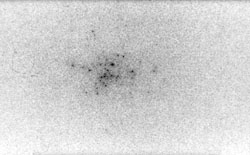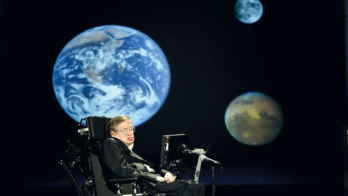Until the advent of high-energy accelerators in the 1950s, high-energy cosmic rays were the main source of information on subnuclear particles. Now they are back in the research spotlight and unexplained cosmic-ray phenomena could point to gaps in our understanding, as discussed at an international symposium.
Cosmic rays, the extraterrestrial particles which rain down on the Earth, extend to energies greater than those available via the biggest laboratory machines. This ultra-high-energy frontier is the traditional focus of the International Symposium on Very High Energy Cosmic Ray Interactions, and the most recent event at the Italian Gran Sasso laboratory highlighted the continual enigma of the universe’s highest particle energies.
High-altitude emulsion chamber experiments record the tracks left by these particles. The Pamir experiment, at an altitude of 4400 metres in Central Asia, confirmed earlier observations of coplanar sheets of hadrons from primary particles with energies above 8000 TeV.


This phenomenon is seen in multiple “halo” events with total visible electromagnetic energy above 700 TeV recorded in X-ray emulsion chambers. (Haloes are large black spots on the film, up to several square centimetres.) The events have several separate haloes whose centres lie in a straight line even after having passed through the atmosphere. A number of phenomenological models, some invoking unusual heavy penetrating hadrons, attempt to explain this, but the process remains a mystery.
The long-standing BrazilJapan collaboration operating X-ray emulsion chambers at 5200 m on Mt Chacaltaya in the Bolivian Andes, described in detail a recent clean example of a “Centauro” event.
Centauros were first reported in 1980 by the BrazilJapan team and confirmed in 1984 by the Pamir collaboration. These events contain relatively few particles, but which are almost entirely hadrons, with very few photons. They show that at these energies, hadrons can be generated without neutral pions or eta mesons (which decay into photons).
Man and horse
In Greek mythology, a Centaur was highly asymmetric, with the top half of a man and the legs of a horse. The latest physics Centauro is totally free of photons and with a similar appearance to the original Centauro I. Centauro events have always been a puzzle and remain the subject of speculation.
Other mysterious phenomena seen by these experiments include anomalous cascades penetrating very large thicknesses of densely absorbing material.
It is certainly difficult to explain the exotic phenomena seen by such high-altitude emulsion chamber experiments using conventional physics. This was underlined at the meeting by simulations described by M Tamada of Kinki, Osaka.
Presenting the status of today’s Standard Model, Guido Altarelli of CERN laid special emphasis on the riddles posed by the observation of ultra-high-energy cosmic rays, above 1020 eV.
Increased understanding strengthens the links between cosmic ray and accelerator experiments. An important part of the conference was devoted to this topic, with status reports from major laboratories.
Of particular interest to cosmic-ray physics is the search for the quark-gluon plasma, the precursor of nuclear matter, in heavy ion collisions. The subject was reviewed by Jürgen Schukraft of CERN with special emphasis on the recent data from lead ion experiments at CERN.
Another major focus of the conference was the extreme cosmic-ray energy spectrum. The energies of primary particles extend from around 109 eV (1 GeV) to above 1020 eV, the latter being more than 100 000 times the energies at which it has been possible to observe the primaries directly with balloon- or satellite-borne experiments. Information on this very-high-energy region comes instead from indirect methods via the investigation of extensive atmospheric air showers (EAS) using detectors on the ground.





